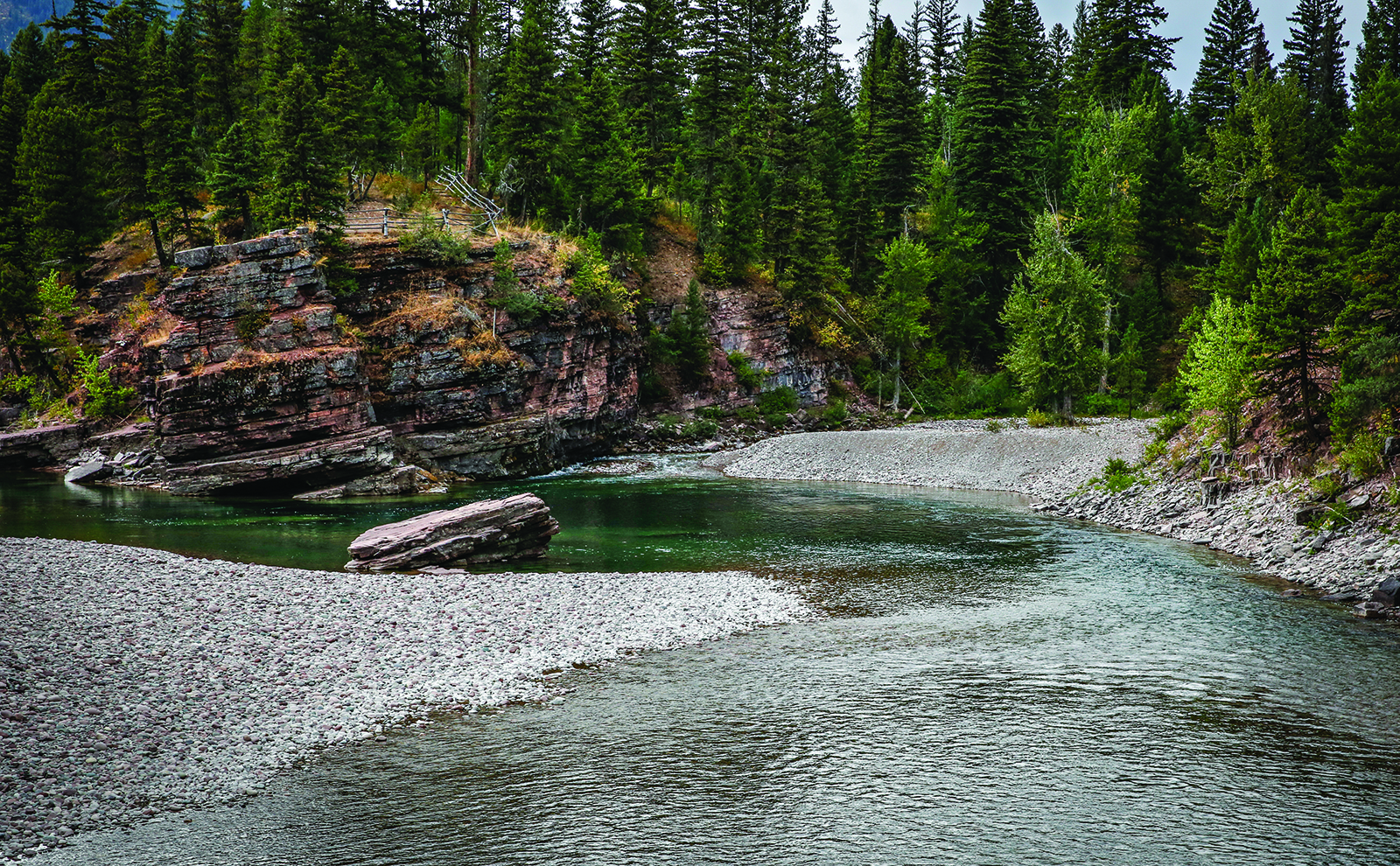Flathead Forest Issues Final Decision Approving 1,005-Acre Spotted Bear Timber Sale
Project scope includes 712 acres of commercial timber harvest and 293 acres of other vegetative treatments near the Bob Marshall Wilderness
By Tristan Scott
Flathead National Forest officials have completed the environmental assessment and signed a final decision notice approving a timber project involving 1,005 acres of commercial harvest and precommercial thinning just south of the Spotted Bear Ranger Station, near the Spotted Bear River’s confluence with the South Fork Flathead River, about 40 miles southeast of Hungry Horse.
Forest officials explained in a Dec. 21 decision notice that the overarching goal of the project is to improve the “diversity and resilience of forest vegetation, largely by increasing the presence of ponderosa pine on the landscape.” Other goals include improving forest health, reducing the negative impacts of wildfire, and contributing forest products to the local community.
“The primary objective is to create a stand structure that will have a higher probability of surviving future wildfire, insect, and disease,” the decision notice states.
In addition to the 712 acres of commercial timber harvest, the signed decision approves 293 acres of other vegetative treatments, including 265 acres of precommercial thinning and 28 acres of prescribed burn. Precommercial or noncommercial thinning applies to trees that are too small to be sold for conventional wood products such as lumber; the excess trees are typically left on site after being cut, or are concentrated into piles and then burned.
“Our team has put in a lot of time and hard work to get us to this point. I am anxious to see the groundwork get started,” Spotted Bear District Ranger Scott Snelson said. “The planned treatments will help the forest remain healthy despite the harsh conditions brought on by a changing climate.”
Timber harvest and fuels management work could start in the late summer or early fall of 2023, according to Snelson.
The Spotted Bear Mountain Project encompasses 3,800 acres within the Spotted Bear Ranger District on the Flathead National Forest, 42% of which would occur on acreage within the wildland-urban interface (WUI) established by the Flathead County Community Wildfire Protection Plan. A section of the South Fork Flathead River that’s been designated as a Wild and Scenic River corridor runs through the project area, although no treatment would occur along the river corridor, according to the proposal.
The Spotted Bear Mountain Project does not propose any changes to public motorized access in the project area. Winter road access issues are of great interest to the public. All roads in the Spotted Bear Mountain Project area will remain closed to public motorized use post project, including motorized over-snow use.
The project also includes 86 acres of seed tree treatment and a half-mile of road construction on lands identified as grizzly bear secure core habitat as defined by the Flathead National Forest’s 2018 Forest Plan.
According to the final environmental assessment, lack of wildfire in the Spotted Bear Mountain project area has resulted in dense forest conditions and a shift in species composition from ponderosa pine to Douglas-fir. One goal of the project is to increase the presence of fire-tolerant species such as ponderosa pine, which dominated this landscape historically. Other goals include improving forest health, reducing fire behavior to facilitate safe firefighter operations and contributing forest products to the local community.
As Snelson explains, the intent of the project is to “address wildland-urban interface fuel loading, diversify plant and tree communities, and provide a mix of forest products for local economies.”
Forest officials received numerous comments regarding the project since the Spotted Bear Ranger District first asked for public input in the fall of 2021, according to Snelson. Some commenters support the fuels-reduction strategy and the timber harvest benefits for the local economy.
Other commenters expressed concern for fish and wildlife species, particularly bull trout, grizzly bear, lynx and wolverine.
Snelson said the project team considered all comments and agreed upon an alternative that meets project objectives and maintains wildlife habitat security while minimizing impacts to other resources.
“The comments we received indicate how deeply our commenters care for the Forest, the opportunities these public lands present, and for the fish and wildlife that live here,” Snelson said.
The northwest corner of the project area lies near the historic Spotted Bear Ranger Station at the confluence of the Spotted Bear and South Fork Flathead rivers. From that point, the project area extends to the southeast for approximately five miles, bordering the eastern bank of the South Fork.
None of the proposed treatment area has experienced wildfire since before 1885, but wildfires such as the Trail Creek Fire of 2015 have burned nearby, and wildfire mitigation is a centerpiece of the project.
Approximately 2.7 miles of roads would be constructed and added to the Flathead National Forest road system, while 0.6 miles of temporary roads would be constructed and then rehabilitated after log hauling is complete, the proposal states. Public motorized access would not change.
To improve the forest’s long-term resistance to insects, disease and fire, forest managers hope to diversify tree species and sizes. For the Spotted Bear project, the proposed work would decrease the dominance of Douglas fir and increase the presence of aspen and fire-tolerant species such as ponderosa pine and western larch, according to Snelson. Throughout the project area, Douglas fir trees are dying from root disease and beetle kill, he said.
“This project will help our large trees, particularly our large ponderosa pines, thrive into the future,” Snelson said.
Another goal of the of the project is to reduce existing wildland fuels. By reducing forest fuels, expected fire behavior is reduced.
“The proposed treatments are especially important in the northern project area which is close to guest ranches and the Spotted Bear Ranger District buildings,” according to Snelson.
More information about the project can be found on Flathead National Forest’s website or by contacting Project Leader, Gary Blazejewski at [email protected] or (406) 387-3827.